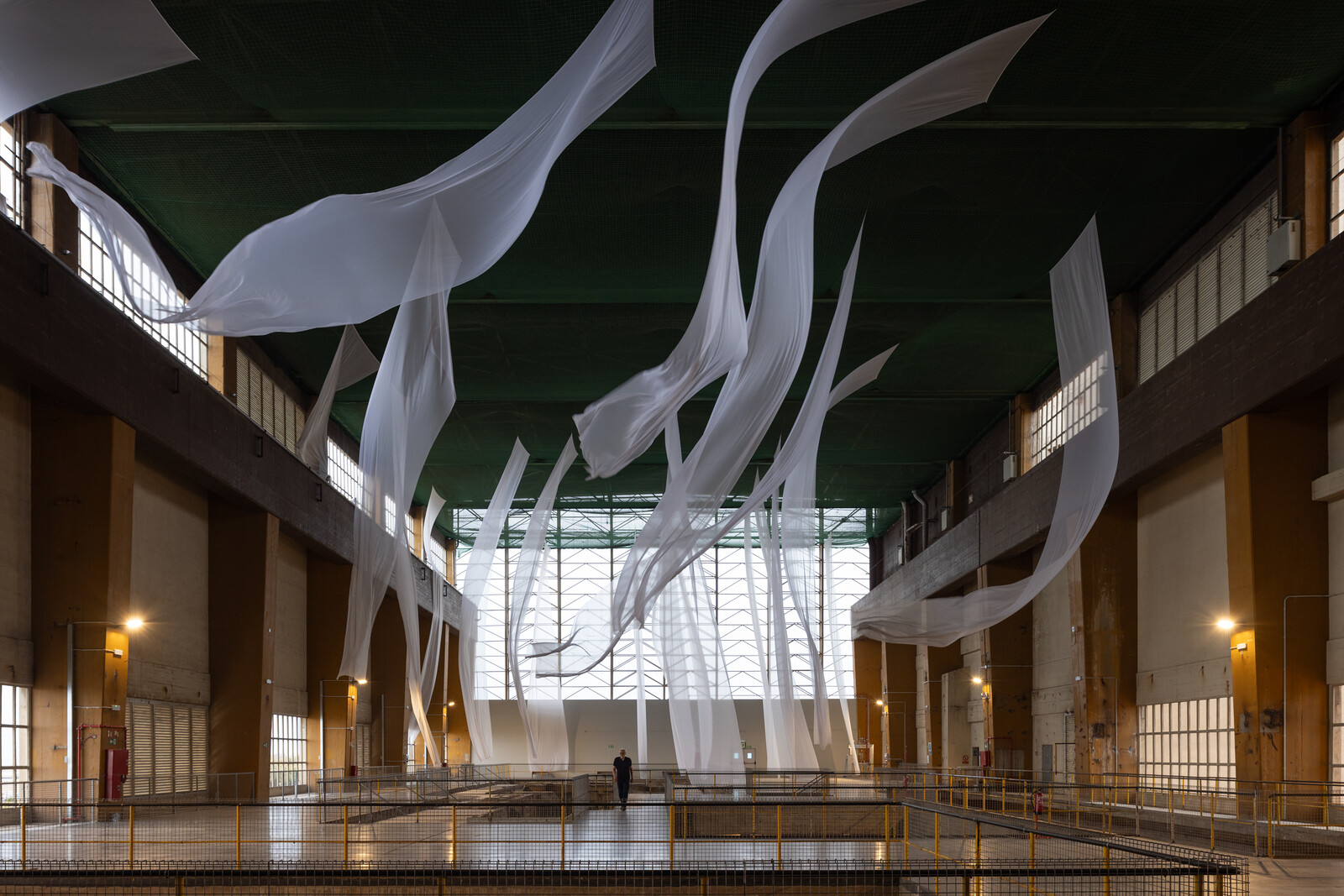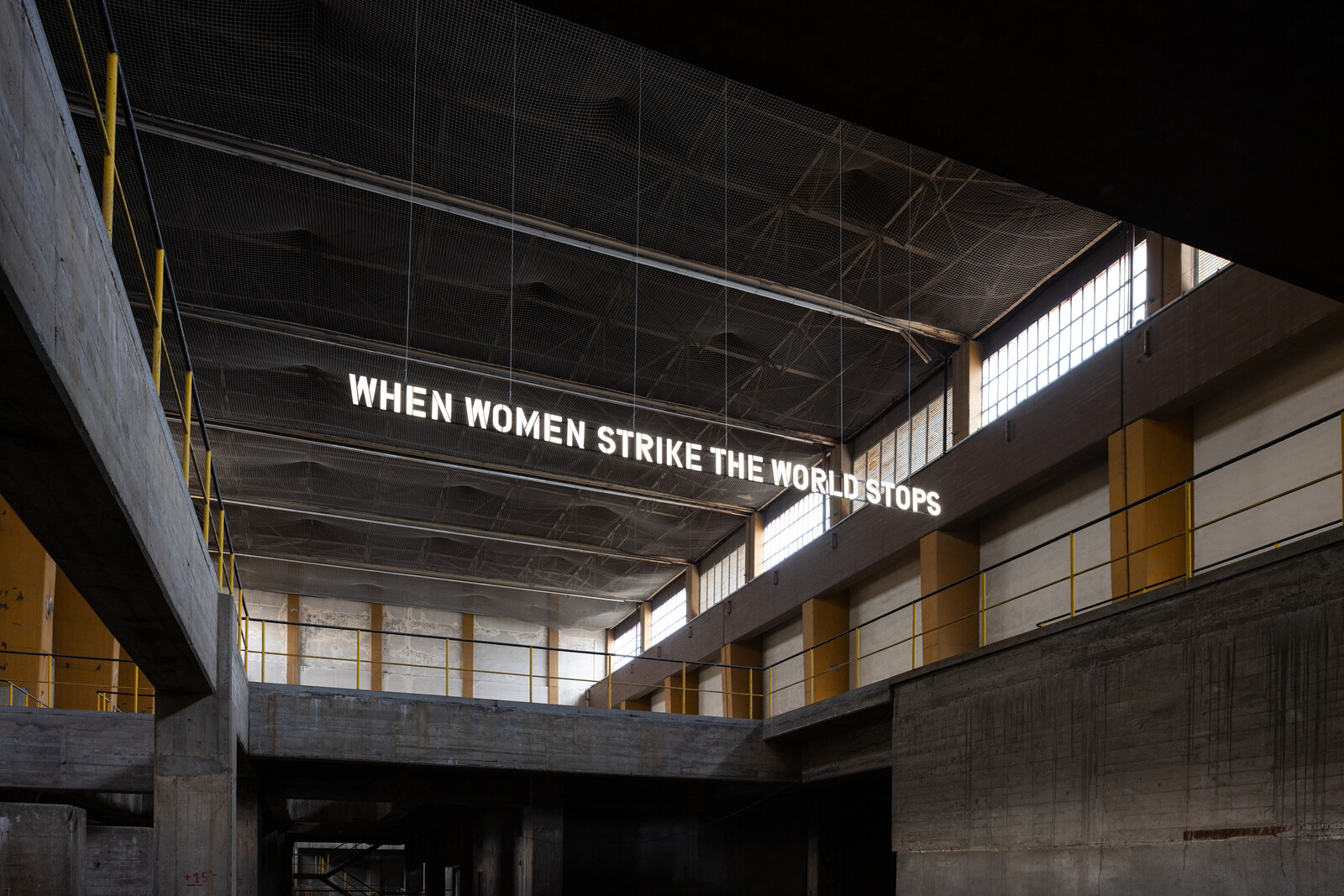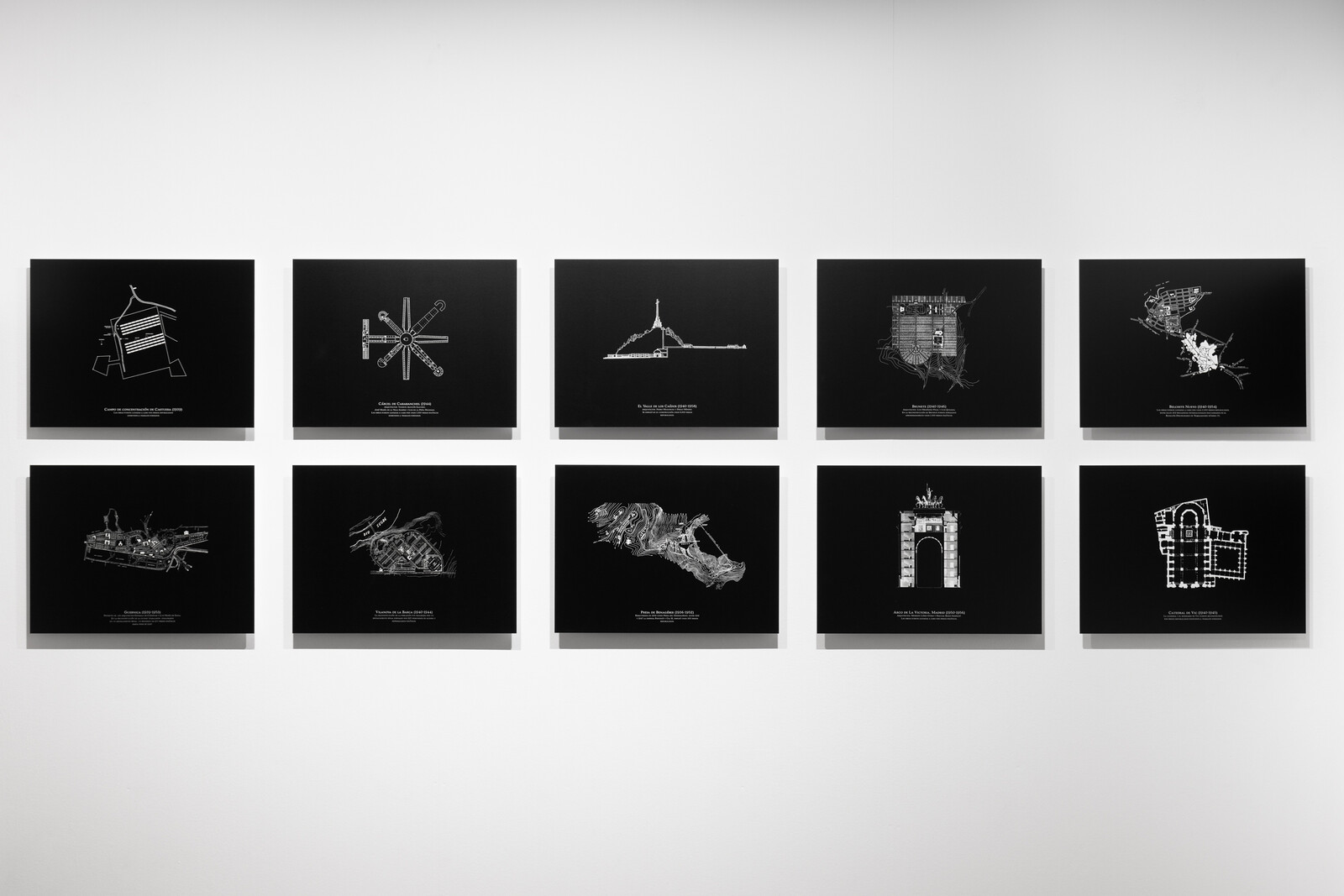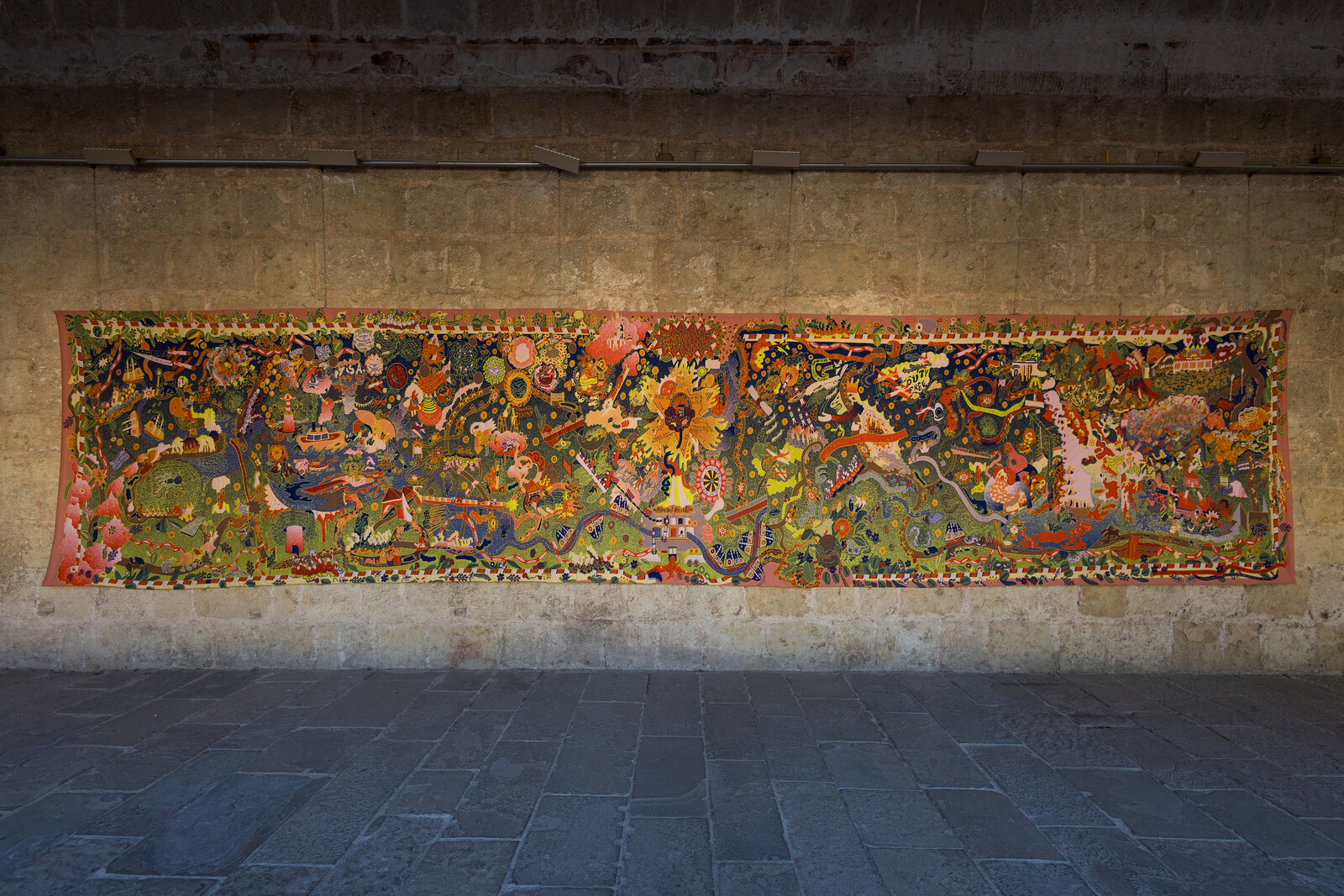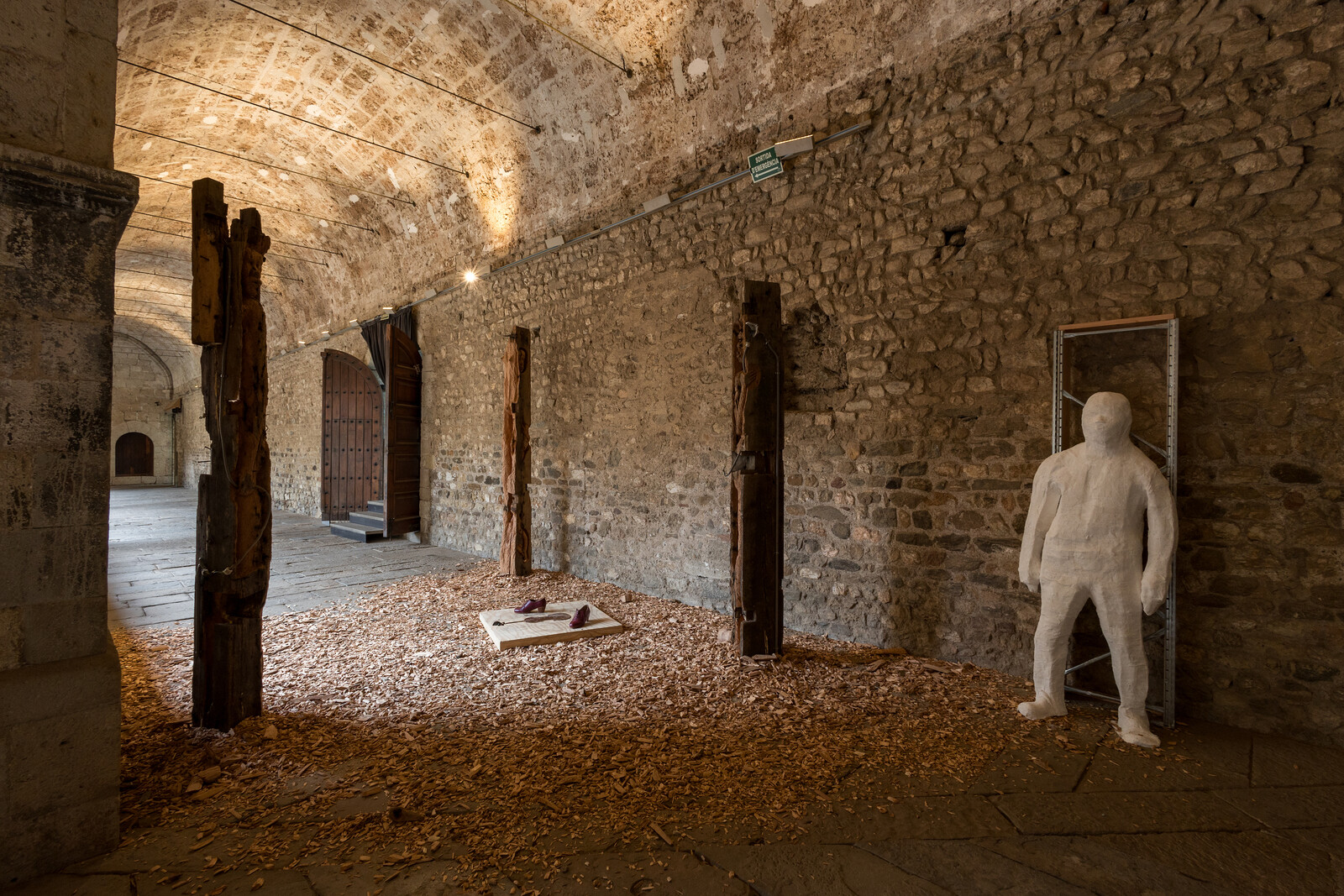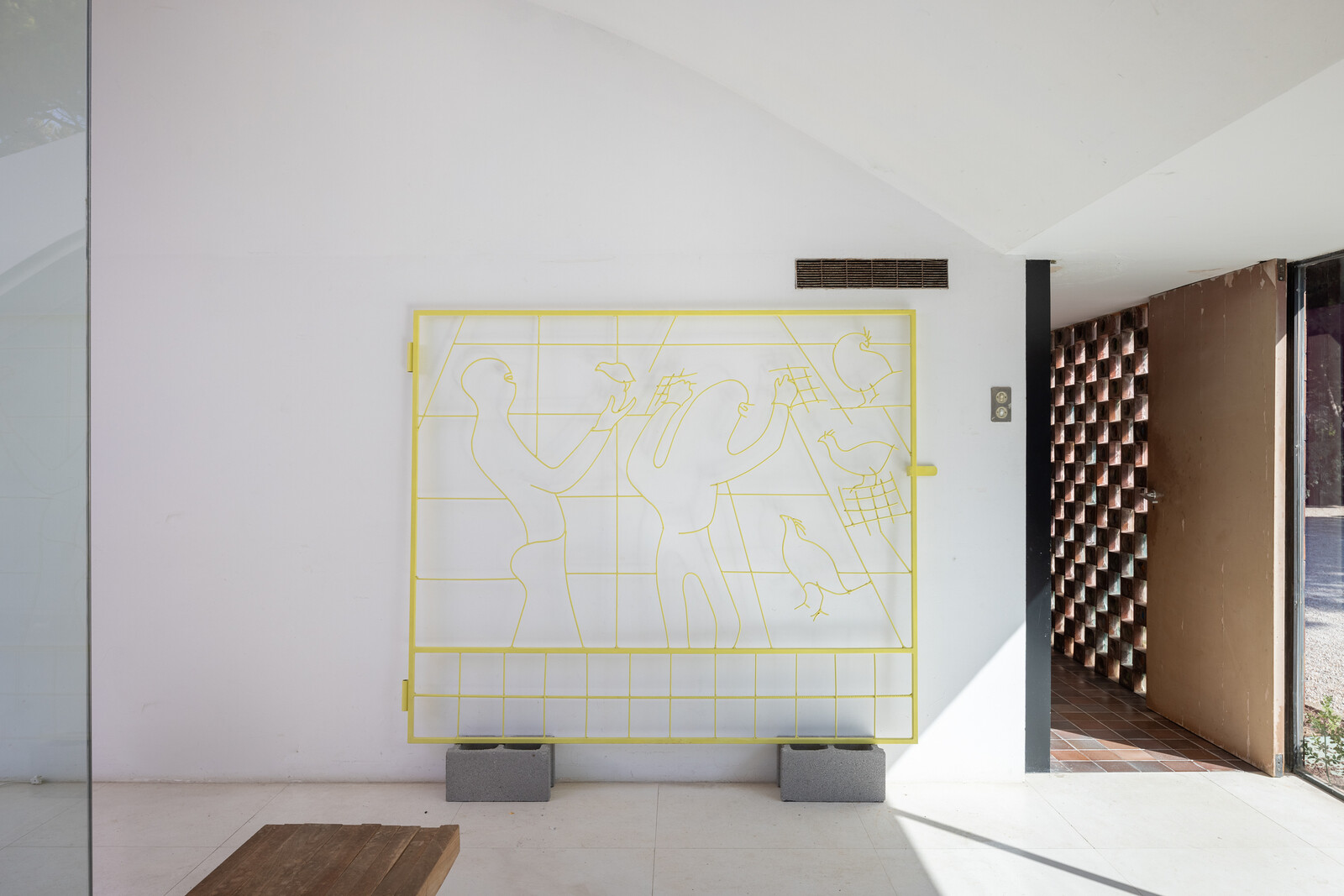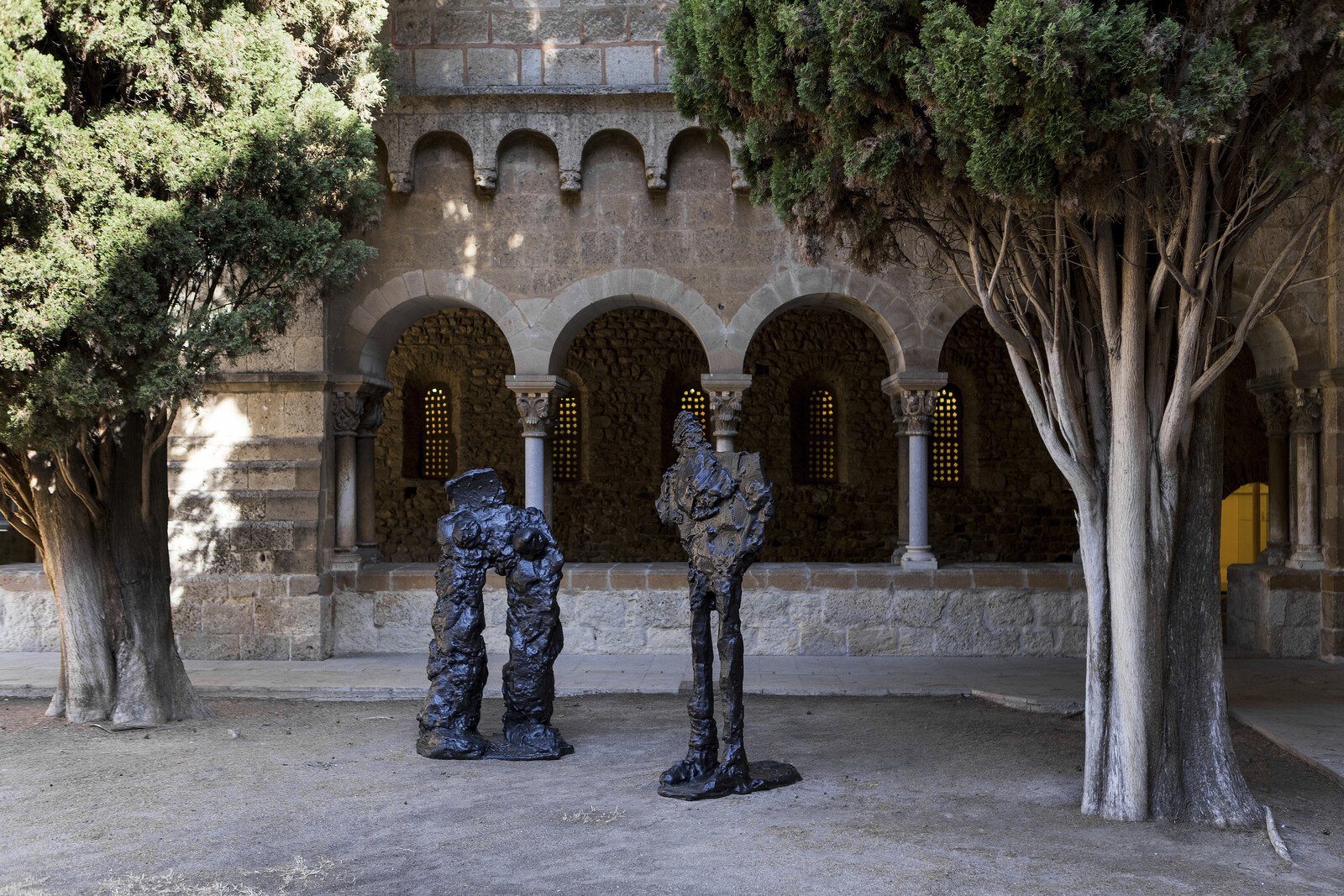September 8–November 24, 2024
The defining model of European architecture in the twentieth century is not Bauhaus, Brutalism, Expressionism, or Functionalism; it is the detention camp. This idea is proposed by Domènec’s installation A Century of European Architecture (2024). Displayed in the old Mataró prison, it shows floor plans of spaces built to imprison people without charge from a World War I-era internment camp in Great Britain to the Moria refugee camp on Lesbos. The installation reflects Manifesta’s broader remit of framing engagements with European history with contemporary art, and helping audiences position themselves in relation to its social and political present. The impact of Domènec’s work is greatly enhanced by the space in which it is shown: Mataró was the first panopticon-style prison in Spain. Unfortunately, not every piece in this biennial is as substantial or shown in contexts as apt or as focused as this.
Manifesta’s fifteenth edition has been divided into three clusters—“Cure and Care,” “Imagining Futures,” and “Balancing Conflicts”—spread across twelve districts in the Barcelona metropolitan area. The narrative thread of the event itself is equally atomized and dispersed. Within the three clusters, viewers encounter works that do not connect with each other—but do, however, with the curatorial approach of other clusters. This curatorial incoherence is perhaps due to the fact that this edition does not, in fact, have a curator. Rather, there is an artistic team of eleven representatives led by an “artistic creative mediator,” Filipa Oliveira, and the director of the biennial, Hedwig Fijen.
Against the backdrop of ongoing protests by city residents against overtourism, during which crowds are often heard chanting “tourists go home,” the organization has opted to present exhibitions in places far from Barcelona’s heart. At a rough guess, it would take the average spectator at least five busy days to see the whole of the show. To reach Casa Gomis from the center of Barcelona, to pick one example, the visitor has either to take a costly taxi, or a subway and two busses—the latter journey takes an hour and a half. The effort required to reach these more remote venues, for those that can make them, is often rewarded by the quality of individual works. This is particularly true of those included in “Imagining Futures,” in which the union of contemporary art, display context, and historical engagement—as exemplified in Domènec’s work—illuminates current issues from the migrant crisis to the rise of the far-right.
At the center of this cluster is the Three Chimneys of Sant Adrià de Besòs, so-called for its distinctive 200 meter–tall smokestacks. This giant, decommissioned thermal power station, reopened for the first time since its closure in 2011, houses works that draw connections between the building’s history and damage to the surrounding ecosystem with reflections on the broader effects of industrial growth. Asad Raza has hung white fabrics (Prehension, 2024) that, a curatorial text explains, dance in the wind coming from Africa, the sirocco, creating a ghostly choreography in a place that was once full of workers. Under the fabrics shines the neon phrase “When women strike the world stops” (2020): Claire Fontaine’s tribute to the women who lobbied for the power plant to be built according to a less environmentally damaging design, and for the height of the chimneys to be raised to prevent ash from falling on their houses.
“Upon our blood and bones your city foundations lay,” is written in chalk on one of the blackboards placed by Larry Achiampong in the garden of Casa Gomis, home to the “Balancing Conflicts” cluster. The venue is on the far side of the city from the Three Chimneys, yet the phrase summarizes many of the issues raised in “Imagining Futures”: the rise and growth of modern Europe, its struggle to maintain a balance between development and ecological degradation. This homogeneity of theme could usefully serve as a bridge between clusters that are geographically far removed. Instead of generating fruitful dialogues, however, these works feel disconnected from each other. Indvidually compelling paintings by Annette Barcelo, tapestries by Gözde İlkin, and an installation by Lin May Saeed feel united by little more than a shared preoccupation with nature and the fantastical.
Achiampong puts on the table—or, more literally, on the blackboard—subjects explored in greater depth at the Manifesta headquarters in the former Gustavo Gili publishing house. These works dare to tackle racism, colonialism, and related subjects barely touched upon elsewhere in the show. In this modernist architecture, artists, supported by archival research, investigate Catalonia’s colonialist past, the exploitation of raw materials and African labor, and the rescue of past educational projects—a collaborative research project called Fora per fer escola—that sought to embolden a generation of students who were supportive and more sensitive to the environment. Examples such as the first open-air school in Barcelona (Escola de Bosc, from 1914) inspire events taking place during the biennial, such as a platform that aims to promote greater engagement between students and the natural world called Teachers’ Camp.
For those able to visit the whole exhibition, a fitting way to end would be at the outstanding Monastery of Sant Cugat, a forty-five-minute train ride inland from the city center and home to “Cure and Care.” Here, viewers can empathize with the orange aquatic snake–like creature that features in Fanja Bouts’s tapestry A Largely Distorted yet Surprisingly Ordered Map of Regular Irregularities: A Dense Description of The Present Day History of The Future (2023). In the midst of a chaos populated by invented beings and capitalist threats, the figure says “I don’t get it.”
“Cure and Care” is the most disjointed axis of the biennial. Sant Cugat is a jewel of Benedictine architecture yet, unlike with Domènec’s work, this ninth-century setting feels at odds with the curatorial rhetoric of this cluster, which insists on “the healing power of culture and the importance of caring for ourselves.” It is hard to access—not only physically, but also in terms of viewers’ ability to engage with the work—Simone Fattal’s amorphous sculpture, the performative activation of Martin Toloku, the grotesque pottery of Seyni Awa Camara, or the soap-sculpted maternities of Buhlebezwe Siwani. In these and other cases, the viewer must unravel skeins of curatorial thinking in order to reach the work of art. All while trying actively to glimpse insights into Europe’s ongoing crises—something that only a few pieces do, and often with a soft touch. The artists’ pieces have been covered in a glitter of ideas that link to eco-social transformation, more-than-human perspectives, the balance of growth with preservation, the healing power of culture, and the connection of social and artistic communities with local infrastructures. Yet the grandiloquence of these words is as hard to navigate as the geographical scope of the biennial.
